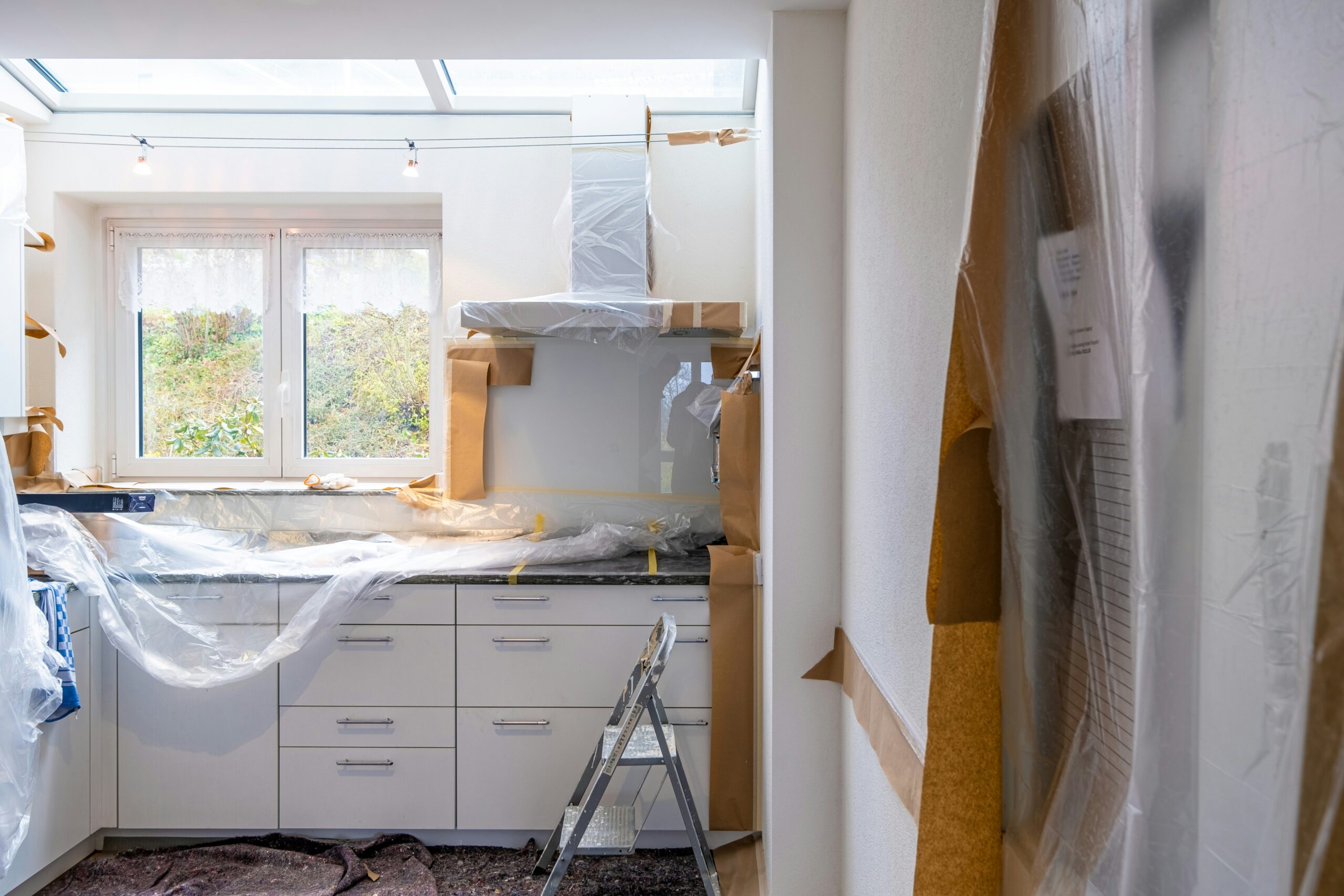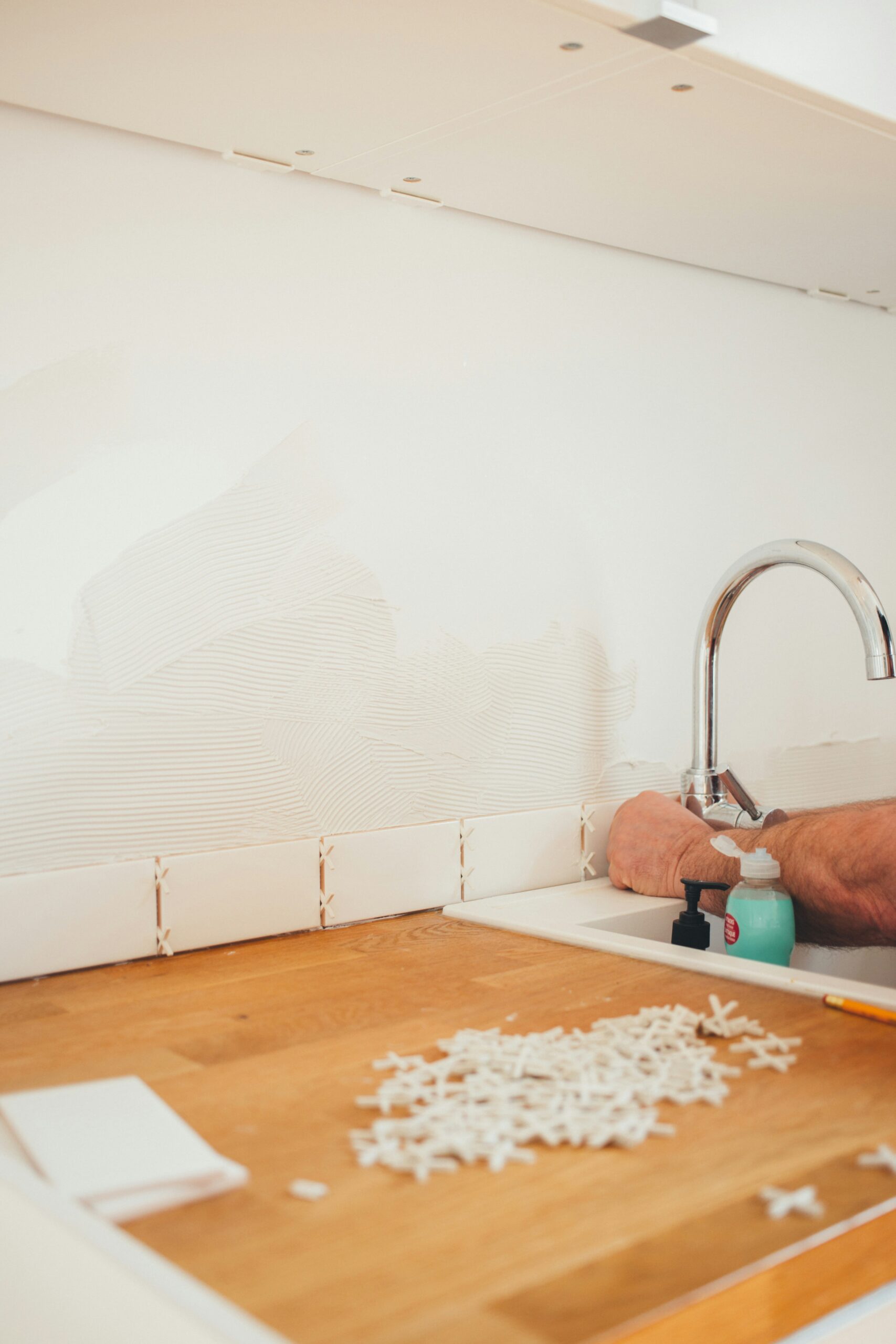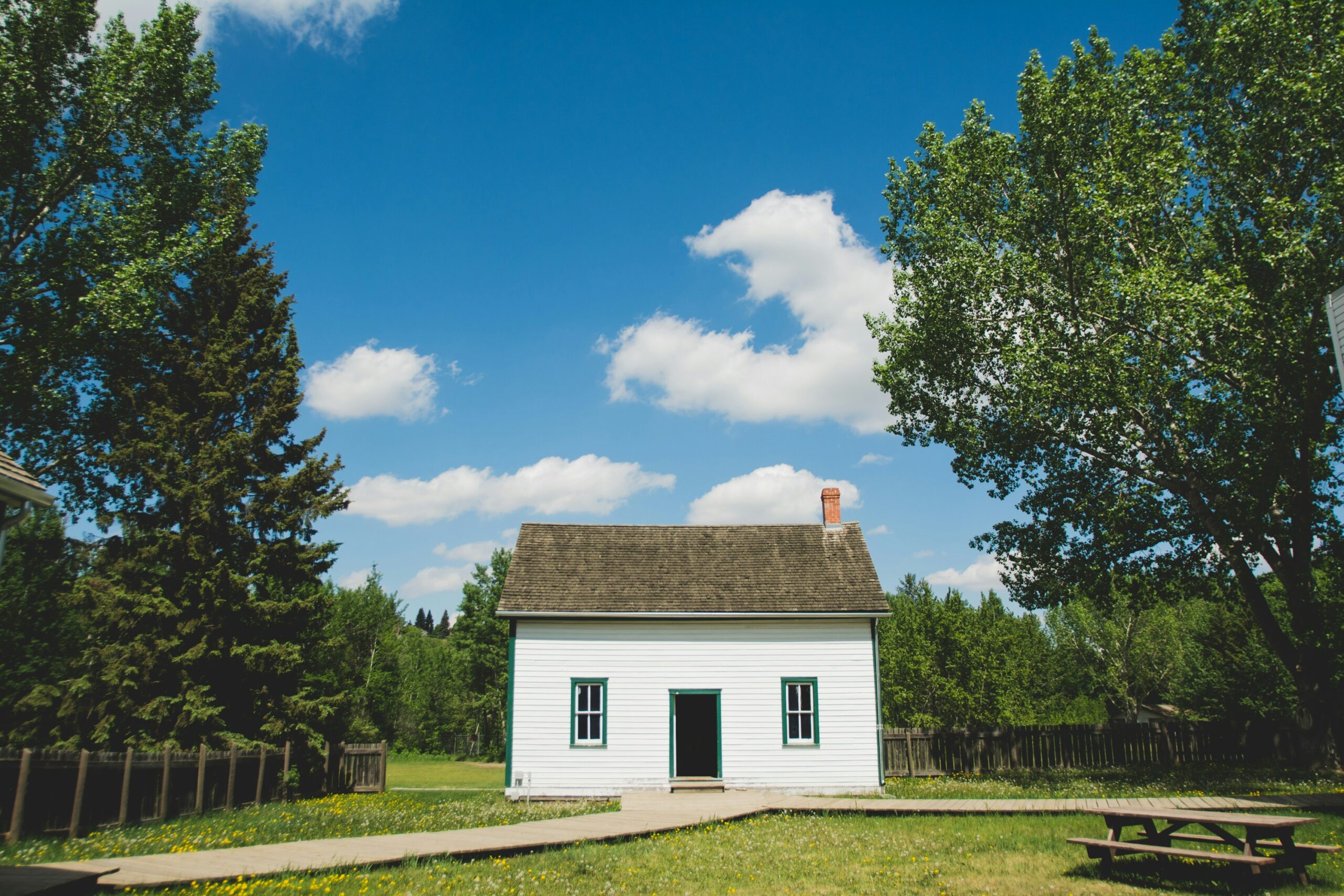Essential Exterior Renovations to Complete Before Denver’s Winter
July 17, 2025
Essential Exterior Renovations to Complete Before Denver’s Winter
July 17, 2025
Winter in Denver doesn’t mess around. One day you’re enjoying 70-degree sunshine, and the next you’re dealing with a blizzard that dumps two feet of snow and brings temperatures well below zero. As both a General Contractor and Realtor in Denver, I’ve seen what happens when homeowners put off exterior renovations until “next spring”—and it’s never pretty.
The reality is that Denver’s harsh winter weather can turn minor exterior issues into major problems, and once winter hits, most exterior work becomes impossible or extremely expensive. Smart homeowners use late summer and early fall to tackle the exterior projects that will protect their investment through the cold months ahead.
Let me walk you through the essential exterior renovations that need to happen before winter, why timing matters so much in our climate, and how to prioritize these projects to protect your home and your wallet.
Why Denver’s Winter Makes Exterior Work Urgent
Our Colorado winters are uniquely challenging for homes. We don’t just get cold—we get dramatic temperature swings that can go from 60 degrees to below zero in a matter of hours. Add in intense UV exposure, sudden hailstorms, heavy snow loads, and ice damming, and you have conditions that test every exterior surface of your home.
The Freeze-Thaw Cycle Problem
Denver’s winter temperature fluctuations create constant freeze-thaw cycles that are devastating to exterior materials. Water gets into small cracks during warm days, then freezes and expands when temperatures drop, making small problems much bigger. A tiny crack in your siding in October can become a major water intrusion problem by March.
Limited Winter Work Windows
Once consistent cold weather arrives, most exterior work becomes impractical or impossible. Paint won’t cure properly below 50 degrees, concrete work is risky below 40 degrees, and roofing work becomes dangerous with snow and ice. The window for exterior renovations typically closes by late October and doesn’t reopen until April.
Cost Implications
Emergency repairs in winter cost significantly more than planned renovations in fall. When your roof starts leaking during a January blizzard, you’ll pay premium prices for emergency service, and the work quality often suffers due to weather constraints.
Roofing: Your Home’s First Line of Defense
Your roof takes the brunt of Denver’s weather punishment, and winter exposes every weakness. Addressing roofing issues before winter isn’t just smart—it’s essential for protecting everything inside your home.
Critical Roofing Projects
If your roof is more than 15 years old or showing signs of wear, don’t wait until spring to address it. Missing or damaged shingles, worn flashing around chimneys and vents, and aging gutters all become serious problems when winter weather hits.
Hail damage is particularly common in Denver, and what looks like minor cosmetic damage in summer can lead to leaks and ice damming in winter. Even if your insurance claim was denied or you decided not to file, addressing hail damage before winter prevents much more expensive problems later.
Gutter and Downspout Upgrades
Properly functioning gutters and downspouts are crucial for preventing ice dams and water damage. Clean gutters thoroughly, ensure they’re securely attached, and make sure downspouts direct water well away from your foundation. Consider gutter guards if you’re tired of cleaning them multiple times per year.
Timeline Considerations
Quality roofing contractors book up quickly as winter approaches, and material availability can become an issue. Start planning roofing projects by late July and aim to complete them by early October. Don’t wait for the first snow forecast to start making calls.
Siding and Exterior Walls: Sealing Out the Elements
Denver’s dry climate and temperature extremes are tough on siding materials, and small gaps or damage can let in moisture that causes significant problems when it freezes.
Siding Inspection and Repair
Walk around your home and look for loose, cracked, or missing siding pieces. Pay special attention to areas around windows, doors, and where different materials meet. These transition areas are particularly vulnerable to weather infiltration.
Wood siding needs special attention in our climate. Check for signs of moisture damage, insect activity, or areas where paint is failing. These problems accelerate quickly in winter conditions and can lead to structural damage if not addressed.
Caulking and Weatherproofing
Fresh caulk around windows, doors, and other penetrations is one of the most cost-effective ways to prepare for winter. Denver’s dry climate causes caulk to shrink and crack faster than in humid climates, so annual inspection and touch-up is essential.
Use high-quality exterior caulk rated for temperature extremes. Cheap caulk fails quickly in our climate and often causes more problems than it solves. This is one area where spending a little more upfront saves significantly in the long run.
Painting and Staining Projects
Exterior paint and stain provide crucial protection against moisture and UV damage. Denver’s intense sun and dry climate are particularly hard on exterior finishes, and failing paint or stain leaves your siding vulnerable to winter damage.
Plan painting projects for late summer or early fall when temperatures are moderate and humidity is low. Paint needs several days of good weather to cure properly, and once winter weather arrives, you’ll have to wait until spring for another opportunity.
Windows and Doors: Energy Efficiency and Weather Protection
Windows and doors are critical for both energy efficiency and weather protection, and problems that are merely annoying in summer become expensive in winter when your heating system works overtime.
Window Maintenance and Upgrades
Inspect all windows for damaged weatherstripping, loose glazing, or signs of seal failure in double-pane units. These issues not only waste energy but can allow moisture infiltration that leads to more serious problems.
If you’re considering window replacement, fall is the ideal time. New windows significantly improve energy efficiency and comfort, and completing the work before winter means immediate benefits during the heating season.
Door Projects
Exterior doors take a beating from Denver weather, and a door that doesn’t seal properly can waste hundreds of dollars in heating costs over a winter. Check weatherstripping, door alignment, and the condition of thresholds and door frames.
Storm doors are particularly valuable in Denver’s climate, providing an extra barrier against wind and temperature extremes. If you don’t have storm doors, consider adding them before winter for both energy savings and protection of your primary doors.
Foundation and Drainage: Preventing Water Problems
Water problems around your foundation become much more serious in winter when freeze-thaw cycles can cause significant structural damage.
Grading and Drainage
Ensure water drains away from your foundation in all directions. Poor drainage that causes minor basement dampness in summer can lead to serious foundation problems when that water freezes and expands in winter.
Check that soil around your foundation slopes away from the house and that landscaping doesn’t create areas where water can pool. This is particularly important on the north side of homes where snow lingers longer and creates more freeze-thaw cycles.
Foundation Sealing
Small cracks in foundation walls can become major problems when water gets in and freezes. Seal any visible cracks with appropriate materials, and consider professional waterproofing if you’ve had moisture issues in the past.
Sprinkler System Winterization
Don’t forget about your irrigation system. Properly winterizing sprinkler systems prevents thousands of dollars in damage from frozen pipes. This typically needs to happen by mid-October, depending on weather patterns.
Deck and Patio Maintenance: Protecting Outdoor Investments
Outdoor living spaces need special attention before winter, as they’re exposed to the full force of Denver’s weather without the protection that walls and roofs provide to the rest of your home.
Deck Inspection and Maintenance
Check deck boards, railings, and structural connections for signs of wear or damage. Pay special attention to areas where water can collect, as these are most vulnerable to freeze-thaw damage.
If your deck needs staining or sealing, fall is the ideal time. Properly sealed wood decks last much longer and look better, while untreated wood can suffer significant damage from winter weather.
Concrete and Stone Work
Inspect patios, walkways, and driveways for cracks or settling. Small cracks become big problems when water gets in and freezes, potentially creating safety hazards and expensive repairs.
Seal concrete surfaces if they haven’t been treated recently. Concrete sealer helps prevent water infiltration and makes snow and ice removal easier during winter months.
Prioritizing Your Exterior Projects
Not every exterior project needs to happen before winter, but some are more critical than others. Here’s how to prioritize when time and budget are limited.
Critical Priority: Weather Protection
Projects that directly protect your home from water infiltration and structural damage should be your top priority. This includes roofing repairs, major siding issues, and foundation problems.
High Priority: Energy Efficiency
Projects that improve energy efficiency provide immediate returns during the heating season. Window and door improvements, weatherstripping, and insulation upgrades pay for themselves quickly in Denver’s climate.
Medium Priority: Maintenance and Aesthetics
Projects like painting, deck staining, and minor repairs can often wait until spring if budget or time is limited, but completing them before winter provides better protection and often better results.
Working with Contractors: Timing and Selection
Book Early
Quality contractors fill their schedules quickly as winter approaches. Start planning major exterior projects in early summer and book contractors by late July or early August for fall completion.
Weather Contingencies
Build weather delays into your timeline. Even the best contractors can’t control Colorado weather, and rushing projects due to approaching winter often leads to quality issues.
Material Considerations
Some materials perform better than others in cold weather installation. Discuss timing and material choices with your contractor to ensure the best results for your specific project and timeline.
The Investment Perspective
Completing exterior renovations before winter isn’t just about avoiding problems—it’s about protecting and enhancing your investment. Well-maintained exterior surfaces last longer, perform better, and maintain higher property values.
Immediate Benefits
Projects completed before winter provide immediate benefits: lower energy bills, improved comfort, and peace of mind during severe weather events.
Long-Term Value
Proper maintenance and timely renovations prevent small problems from becoming expensive disasters. The cost of preventive maintenance is always less than the cost of emergency repairs.
Don’t Wait for Emergency Repairs
The difference between planned renovations and emergency repairs is often thousands of dollars and significant stress. Winter emergency calls are expensive, and the work quality often suffers due to weather constraints and time pressure.
Smart homeowners use the predictable cycle of Denver seasons to their advantage, completing exterior work when conditions are ideal rather than waiting for problems to force their hand.
Ready to Prepare Your Home for Winter?
Whether you need major exterior renovations or just want to ensure your home is ready for another Colorado winter, I can help you prioritize projects and develop a realistic timeline and budget.
As both a General Contractor and Realtor, I understand which exterior improvements provide the best return on investment and how to protect your home’s value through proper maintenance and strategic upgrades.
Schedule Your Pre-Winter Exterior Assessment:
- Comprehensive inspection of all exterior systems
- Prioritized project recommendations with cost estimates
- Contractor referrals and project timeline planning
- Guidance on which projects to tackle now vs. spring
Kitchen renovations consistently rank as one of the most popular and valuable home improvement projects, and for good reason. A well-executed kitchen remodel can transform your daily living experience while [...]
Fixer-uppers can be fantastic opportunities to build equity and create your dream home at a lower entry price. As both a General Contractor and Realtor in Denver, I've helped countless [...]
Timing can make a significant difference in how quickly your Denver home sells and the price you receive. As both a Realtor and General Contractor who's helped countless homeowners navigate [...]
Winter in Denver doesn’t mess around. One day you’re enjoying 70-degree sunshine, and the next you’re dealing with a blizzard that dumps two feet of snow and brings temperatures well below zero. As both a General Contractor and Realtor in Denver, I’ve seen what happens when homeowners put off exterior renovations until “next spring”—and it’s never pretty.
The reality is that Denver’s harsh winter weather can turn minor exterior issues into major problems, and once winter hits, most exterior work becomes impossible or extremely expensive. Smart homeowners use late summer and early fall to tackle the exterior projects that will protect their investment through the cold months ahead.
Let me walk you through the essential exterior renovations that need to happen before winter, why timing matters so much in our climate, and how to prioritize these projects to protect your home and your wallet.
Why Denver’s Winter Makes Exterior Work Urgent
Our Colorado winters are uniquely challenging for homes. We don’t just get cold—we get dramatic temperature swings that can go from 60 degrees to below zero in a matter of hours. Add in intense UV exposure, sudden hailstorms, heavy snow loads, and ice damming, and you have conditions that test every exterior surface of your home.
The Freeze-Thaw Cycle Problem
Denver’s winter temperature fluctuations create constant freeze-thaw cycles that are devastating to exterior materials. Water gets into small cracks during warm days, then freezes and expands when temperatures drop, making small problems much bigger. A tiny crack in your siding in October can become a major water intrusion problem by March.
Limited Winter Work Windows
Once consistent cold weather arrives, most exterior work becomes impractical or impossible. Paint won’t cure properly below 50 degrees, concrete work is risky below 40 degrees, and roofing work becomes dangerous with snow and ice. The window for exterior renovations typically closes by late October and doesn’t reopen until April.
Cost Implications
Emergency repairs in winter cost significantly more than planned renovations in fall. When your roof starts leaking during a January blizzard, you’ll pay premium prices for emergency service, and the work quality often suffers due to weather constraints.
Roofing: Your Home’s First Line of Defense
Your roof takes the brunt of Denver’s weather punishment, and winter exposes every weakness. Addressing roofing issues before winter isn’t just smart—it’s essential for protecting everything inside your home.
Critical Roofing Projects
If your roof is more than 15 years old or showing signs of wear, don’t wait until spring to address it. Missing or damaged shingles, worn flashing around chimneys and vents, and aging gutters all become serious problems when winter weather hits.
Hail damage is particularly common in Denver, and what looks like minor cosmetic damage in summer can lead to leaks and ice damming in winter. Even if your insurance claim was denied or you decided not to file, addressing hail damage before winter prevents much more expensive problems later.
Gutter and Downspout Upgrades
Properly functioning gutters and downspouts are crucial for preventing ice dams and water damage. Clean gutters thoroughly, ensure they’re securely attached, and make sure downspouts direct water well away from your foundation. Consider gutter guards if you’re tired of cleaning them multiple times per year.
Timeline Considerations
Quality roofing contractors book up quickly as winter approaches, and material availability can become an issue. Start planning roofing projects by late July and aim to complete them by early October. Don’t wait for the first snow forecast to start making calls.
Siding and Exterior Walls: Sealing Out the Elements
Denver’s dry climate and temperature extremes are tough on siding materials, and small gaps or damage can let in moisture that causes significant problems when it freezes.
Siding Inspection and Repair
Walk around your home and look for loose, cracked, or missing siding pieces. Pay special attention to areas around windows, doors, and where different materials meet. These transition areas are particularly vulnerable to weather infiltration.
Wood siding needs special attention in our climate. Check for signs of moisture damage, insect activity, or areas where paint is failing. These problems accelerate quickly in winter conditions and can lead to structural damage if not addressed.
Caulking and Weatherproofing
Fresh caulk around windows, doors, and other penetrations is one of the most cost-effective ways to prepare for winter. Denver’s dry climate causes caulk to shrink and crack faster than in humid climates, so annual inspection and touch-up is essential.
Use high-quality exterior caulk rated for temperature extremes. Cheap caulk fails quickly in our climate and often causes more problems than it solves. This is one area where spending a little more upfront saves significantly in the long run.
Painting and Staining Projects
Exterior paint and stain provide crucial protection against moisture and UV damage. Denver’s intense sun and dry climate are particularly hard on exterior finishes, and failing paint or stain leaves your siding vulnerable to winter damage.
Plan painting projects for late summer or early fall when temperatures are moderate and humidity is low. Paint needs several days of good weather to cure properly, and once winter weather arrives, you’ll have to wait until spring for another opportunity.
Windows and Doors: Energy Efficiency and Weather Protection
Windows and doors are critical for both energy efficiency and weather protection, and problems that are merely annoying in summer become expensive in winter when your heating system works overtime.
Window Maintenance and Upgrades
Inspect all windows for damaged weatherstripping, loose glazing, or signs of seal failure in double-pane units. These issues not only waste energy but can allow moisture infiltration that leads to more serious problems.
If you’re considering window replacement, fall is the ideal time. New windows significantly improve energy efficiency and comfort, and completing the work before winter means immediate benefits during the heating season.
Door Projects
Exterior doors take a beating from Denver weather, and a door that doesn’t seal properly can waste hundreds of dollars in heating costs over a winter. Check weatherstripping, door alignment, and the condition of thresholds and door frames.
Storm doors are particularly valuable in Denver’s climate, providing an extra barrier against wind and temperature extremes. If you don’t have storm doors, consider adding them before winter for both energy savings and protection of your primary doors.
Foundation and Drainage: Preventing Water Problems
Water problems around your foundation become much more serious in winter when freeze-thaw cycles can cause significant structural damage.
Grading and Drainage
Ensure water drains away from your foundation in all directions. Poor drainage that causes minor basement dampness in summer can lead to serious foundation problems when that water freezes and expands in winter.
Check that soil around your foundation slopes away from the house and that landscaping doesn’t create areas where water can pool. This is particularly important on the north side of homes where snow lingers longer and creates more freeze-thaw cycles.
Foundation Sealing
Small cracks in foundation walls can become major problems when water gets in and freezes. Seal any visible cracks with appropriate materials, and consider professional waterproofing if you’ve had moisture issues in the past.
Sprinkler System Winterization
Don’t forget about your irrigation system. Properly winterizing sprinkler systems prevents thousands of dollars in damage from frozen pipes. This typically needs to happen by mid-October, depending on weather patterns.
Deck and Patio Maintenance: Protecting Outdoor Investments
Outdoor living spaces need special attention before winter, as they’re exposed to the full force of Denver’s weather without the protection that walls and roofs provide to the rest of your home.
Deck Inspection and Maintenance
Check deck boards, railings, and structural connections for signs of wear or damage. Pay special attention to areas where water can collect, as these are most vulnerable to freeze-thaw damage.
If your deck needs staining or sealing, fall is the ideal time. Properly sealed wood decks last much longer and look better, while untreated wood can suffer significant damage from winter weather.
Concrete and Stone Work
Inspect patios, walkways, and driveways for cracks or settling. Small cracks become big problems when water gets in and freezes, potentially creating safety hazards and expensive repairs.
Seal concrete surfaces if they haven’t been treated recently. Concrete sealer helps prevent water infiltration and makes snow and ice removal easier during winter months.
Prioritizing Your Exterior Projects
Not every exterior project needs to happen before winter, but some are more critical than others. Here’s how to prioritize when time and budget are limited.
Critical Priority: Weather Protection
Projects that directly protect your home from water infiltration and structural damage should be your top priority. This includes roofing repairs, major siding issues, and foundation problems.
High Priority: Energy Efficiency
Projects that improve energy efficiency provide immediate returns during the heating season. Window and door improvements, weatherstripping, and insulation upgrades pay for themselves quickly in Denver’s climate.
Medium Priority: Maintenance and Aesthetics
Projects like painting, deck staining, and minor repairs can often wait until spring if budget or time is limited, but completing them before winter provides better protection and often better results.
Working with Contractors: Timing and Selection
Book Early
Quality contractors fill their schedules quickly as winter approaches. Start planning major exterior projects in early summer and book contractors by late July or early August for fall completion.
Weather Contingencies
Build weather delays into your timeline. Even the best contractors can’t control Colorado weather, and rushing projects due to approaching winter often leads to quality issues.
Material Considerations
Some materials perform better than others in cold weather installation. Discuss timing and material choices with your contractor to ensure the best results for your specific project and timeline.
The Investment Perspective
Completing exterior renovations before winter isn’t just about avoiding problems—it’s about protecting and enhancing your investment. Well-maintained exterior surfaces last longer, perform better, and maintain higher property values.
Immediate Benefits
Projects completed before winter provide immediate benefits: lower energy bills, improved comfort, and peace of mind during severe weather events.
Long-Term Value
Proper maintenance and timely renovations prevent small problems from becoming expensive disasters. The cost of preventive maintenance is always less than the cost of emergency repairs.
Don’t Wait for Emergency Repairs
The difference between planned renovations and emergency repairs is often thousands of dollars and significant stress. Winter emergency calls are expensive, and the work quality often suffers due to weather constraints and time pressure.
Smart homeowners use the predictable cycle of Denver seasons to their advantage, completing exterior work when conditions are ideal rather than waiting for problems to force their hand.
Ready to Prepare Your Home for Winter?
Whether you need major exterior renovations or just want to ensure your home is ready for another Colorado winter, I can help you prioritize projects and develop a realistic timeline and budget.
As both a General Contractor and Realtor, I understand which exterior improvements provide the best return on investment and how to protect your home’s value through proper maintenance and strategic upgrades.
Schedule Your Pre-Winter Exterior Assessment:
- Comprehensive inspection of all exterior systems
- Prioritized project recommendations with cost estimates
- Contractor referrals and project timeline planning
- Guidance on which projects to tackle now vs. spring
Buying your first home in Denver is an exciting milestone, but it can also be overwhelming in our competitive market. As both a Realtor and General Contractor who's helped countless [...]
Kitchen renovations consistently rank as one of the most popular and valuable home improvement projects, and for good reason. A well-executed kitchen remodel can transform your daily living experience while [...]
Fixer-uppers can be fantastic opportunities to build equity and create your dream home at a lower entry price. As both a General Contractor and Realtor in Denver, I've helped countless [...]






